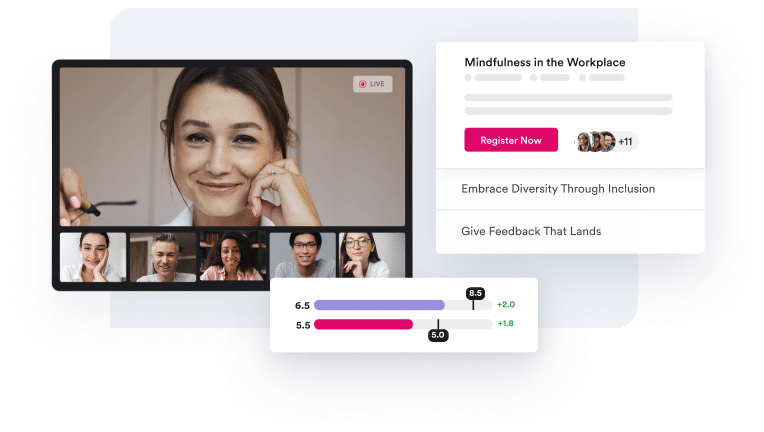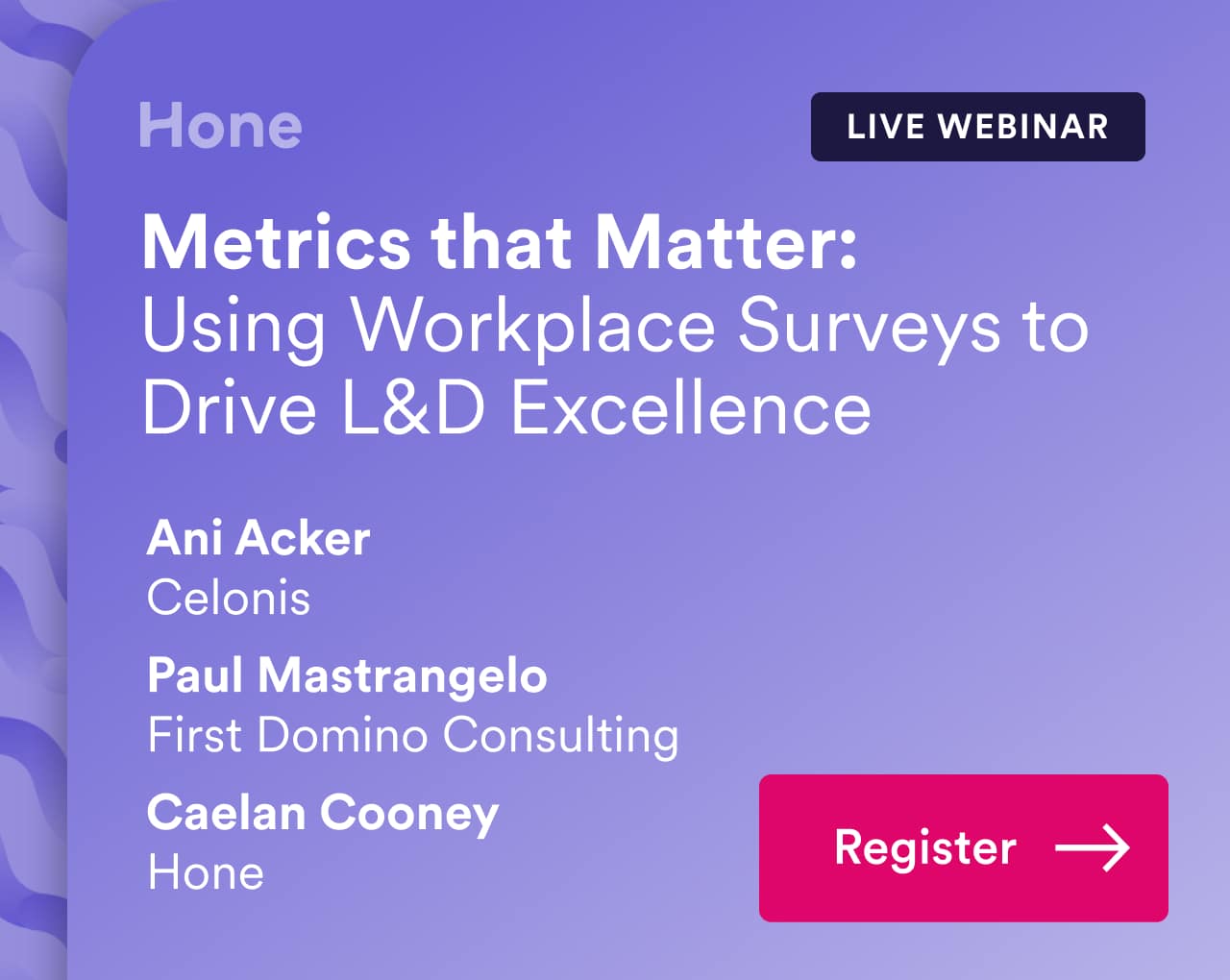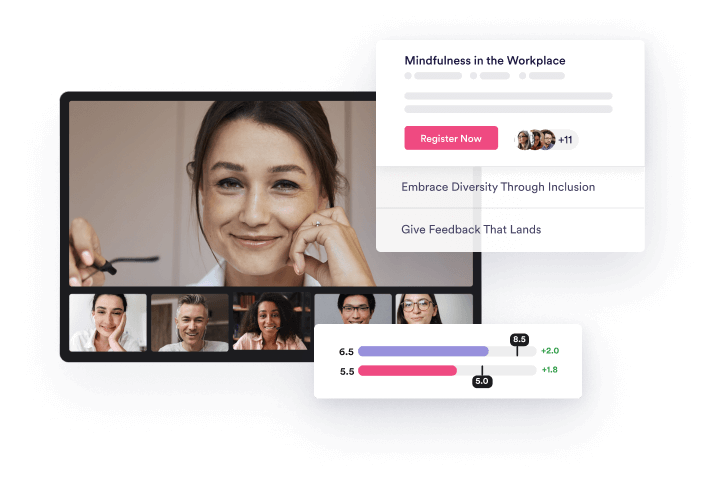As a team leader, it’s important to implement effective coaching and training programs to help your team hone their skills for those tough conversations around performance improvement plans (PIPs). Collaborating and communicating cross-functionally is key to reaching resolutions that benefit everyone involved and promote a healthy work culture. Here are a few ways we believe technology and good training programs unlock success for you and your team.
What is a Performance Improvement Plan (PIP)?
The definition of a performance improvement plan (PIP) refers to a structured process that an employer uses to help employees improve their performance when they are not meeting the expected standards. A PIP outlines specific goals and expectations for the employee, along with a timeline for achieving those goals.
The plan typically includes regular check-ins, progress updates, and specific steps employees can take to improve performance. Performance improvement plans allow employees to improve while setting clear expectations and consequences if their performance does not improve. Ultimately, the goal of a PIP is to help the employee succeed in their role and meet the organization’s performance expectations.
Expectations for each job should be clear and openly communicated with each employee. But U.S. managers might be missing the mark. A recent Gallup poll shows that nearly half of all U.S. employees don’t know what’s expected of them. Moreover, when employees are pressured to perform without a clear set of personal success metrics, it can cause challenging scenarios for employees to feel valued and know how to engage their managers or leaders.
Companies that understand and reinforce good performance management practices see continued success. Performance management typically includes several steps, such as defining job expectations, establishing performance metrics and goals, providing regular feedback and coaching, conducting performance evaluations, identifying areas for improvement, and implementing development plans to help employees reach their full potential.
When HR and company leaders must deliver a performance improvement plan, the following steps are crucial to avoid unhealthy reactions within teams and across the organization. Everyone wants to be treated fairly and feel like they have a chance to showcase their value to the company without sacrificing their well-being. If implemented well, performance improvement plans can be a road back to high performance and not a slippery route to potential separation from their job.
Why are Performance Improvement Plans Important?
Performance improvement plans are essential to protect organizations and support each individual employee. HR leaders who can effectively incorporate PIPs into their performance management guidelines promote more fairness and direct measurement of individual contribution.
4 Important Factors in Implementing an Effective PIP:
- Defining Clear Expectations
- Two-Way Communication
- Employee Motivation
- Legal Protection
Successful PIPs set clear expectations for an employee’s performance and behavior. Performance improvement plans to outline the areas where the employee needs to improve and what specific actions they can take. This clarity helps employees understand what is expected of them and what they must do to meet those expectations.
Consistency is key in reiterating personal goals and providing a healthy space for two-way communication between direct reports and their managers. Performance improvement plans give a formal way of communicating to an employee that their performance is not meeting expectations. It allows the employer to display the areas of concern and discuss possible solutions with the employee. This communication helps the employee understand the gravity of the situation and shows that their employer is invested in helping them improve.
Motivating action from each employee participating in a PIP is important to evaluate progress in the areas of progress. Managers who show their investment in actionable ways demonstrate joint ownership in getting better throughout the improvement plan. The partnership is key, as tension and stress can be prevalent, not to mention anxiety and nerves.
Employee reactions to performance improvement plans vary, and it can come as quite a shock to some. Collaboration across HR, L&D, and each manager involved will show a synchronized and unbias path for the employee to get back on track. To legally protect the organization, a PIP is a way to document an employee’s performance expectations and show if they have made steps to improve. If termination or separation is required for the individual, a straightforward process has been established should any litigation follow.
What’s Human Resources’ Role in Performance Improvement Plan Collaboration?
HR leaders can improve the effectiveness of PIPs by adopting a collaborative approach across teams and utilizing technology to help document and automate certain tasks. This way, there is a source of truth when an employee is under a PIP that is well-written and understood by all parties. In addition, before moving forward with a performance improvement plan, HR leaders can help determine to what level the employee situation should escalate. Here are a few steps involved in the process that the HR department should communicate.
HR Steps Before Delivering a Performance Improvement Plan:
- Determine whether a PIP is an appropriate action for the situation
- Administer all PIPs in conjunction with the manager to prevent bias
- Provide ongoing guidance to both the manager and employee throughout the plan
The Importance of a Collaborative PIP Approach
All teams must be on the same page when delivering a PIP to employees to avoid confusion and present accountable standards and actions. Bringing in relevant parties with multiple disciplines provides a comprehensive approach with each contributor’s specialty involved. For example, HR brings a broader perspective on employment law, company policies, and best practices in handling performance issues. Likewise, managers get experience and knowledge of their team’s day-to-day operations. Combining these two perspectives will create a more complete view of the issue and potential solutions.
HR and managers must communicate effectively to ensure the PIP is executed smoothly. For example, managers should provide HR with all the necessary details about the employee’s performance and the reasons for the PIP, while HR should guide how to structure the PIP and what to include in it.
There should be some employee artifacts to reference throughout the process, whether a performance review or periodic check-ins between employees, managers, and HR. All of these touchpoints add up to supporting a healthy company culture – one that provides transparency, accountability, and encouragement. Of course, navigating a PIP situation between all parties is never easy, and it can even yield negative feelings among team members if honesty and clear expectations are not demonstrated. However, giving employees the tools and resources to promote a positive learning environment leads to higher engagement, increased productivity, and higher employee retention.
Acquiring new talent is costly. SHRM estimates the average cost-per-hire is $4,129, while the average time to fill a position is 42 days. With this in mind, coaching and teaching managers to become positive leaders is important for a high-growth team. L&D leaders have their work cut out for them, as many factors come into play to guide new habits for managers and leaders while reinforcing the company’s values for each individual.
What’s the Role of Technology in Performance Improvement Plans?
Technology advancement helps support so many routine work functions. Teams can benefit from utilizing solutions and tools to make this work more accessible and coordinated with shared tasks in the performance improvement plan process. In addition, technology helps teams collect and analyze data related to the areas that need improvement. This provides a subjective measurement of employee performance to evaluate at the end of the PIP process.
Some employees may experience gaps in training and development. Understanding how each employee is experiencing the transfer of training from materials and sessions is essential to identify where to address concerns. Technology platforms help managers monitor team performance and provide feedback in real time. Performance management software can set goals, track progress, and provide input on development areas. Incorporating these into evaluation programs makes it easier for your team to get work done and take control of each member’s progress.
With digital tools, HR leaders can facilitate communication and collaboration among team members, managers, and stakeholders. Project management software, instant messaging tools, and video conferencing platforms can help teams stay connected and collaborate in real time.
With solutions geared toward improved communication and transparency, many automation features also create less friction and manual work for HR, L&D, and team leaders. Utilize technology to automate repetitive tasks and streamline processes. For example, if there is a new communication rollout or training program, leaders can schedule, create a knowledge base, and track engagement all in one convenient location.
This helps free up time for team members to focus on more critical tasks. A Harvard Business Review study found that employees who received regular feedback and coaching via a digital platform saw a 14.9% increase in productivity.
4 Tips for Integrating Technology into Your PIP Process
- Identify the right tools for your team’s learning and development.
Identify the right tools to help HR leaders effectively manage the PIP process. Many software tools can help automate various aspects of the PIP process, such as goal setting, progress tracking, and feedback sharing.
2. Provide training on the tools you select.
Provide adequate training to employees on how to use each platform effectively. HR leaders should organize training sessions and workshops to help employees understand the features and functionalities of the tools selected and how they can use them to manage their PIPs more efficiently.
3. Communicate the benefits to each stakeholder.
Communicate the benefits of using technology to manage PIPs to employees and leadership. They should explain how the tools can help employees to set and achieve goals more effectively, receive timely feedback, and track their progress.
4. Continuously monitor and evaluate your findings, processes, and tech stack.
HR leaders should continuously monitor and evaluate the effectiveness of the technology in managing performance improvement plans. In addition, they should collect feedback from employees on the tools’ usability and their impact on their performance. Based on this feedback, HR leaders can make necessary adjustments to the tools or the training program to ensure that employees can use them effectively and derive maximum benefit.
The Synergy of Managing Performance Improvement Plans Effectively
When teams find synergy in working together to implement effective PIP best practices, they can confidently move forward with each employee and maintain a repeatable process. Unfortunately, due to the circumstances involved in PIPs, it’s better to have a plan and system to know how to cover and manage expectations and team communication smoothly.
Clear and transparent guidelines can be transferred between leaders, and they can utilize technology solutions to track and measure improvement more efficiently and with collaboration from each specialty involved.










